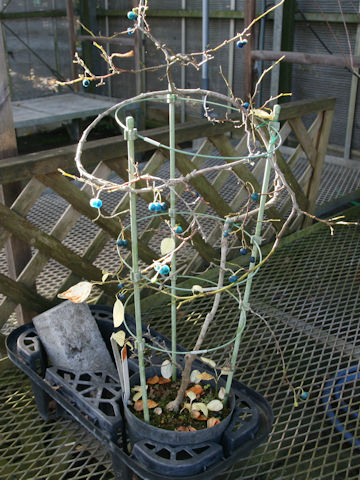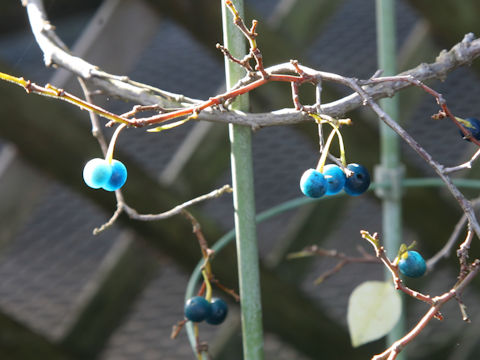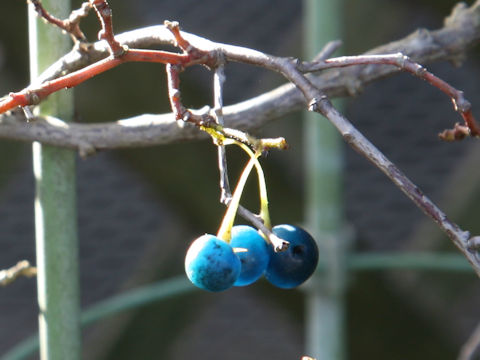
|
The Blue vine (Sabia japonica) belongs to the family Sabiaceae. It is a deciduous shrub that is distributed from western Chugoku region of Honshu west to Shikoku and Kyushu in Japan, as well as in the southeast of China. It grows along the edges of forests in the mountains and fields, and it is a vine that grows by coiling around other trees. The vine coils to the right-handed (Z-twist). The branches are wavy and bent. The leaves are ovate-elliptic in shape, with entire or wavy, finely serrated edges. From March to May, before the leaves have fully developed, yellow flowers bloom in the leaf axils of the previous year. The fruit is a spherical drupe that ripens blue in October. The Japanese name comes from the fact that the young branches are green. On the Ministry of the Environment's Red List, it is classified as Endangered (EN). In Chinese, it is called "清風藤" (qing feng teng).
|


